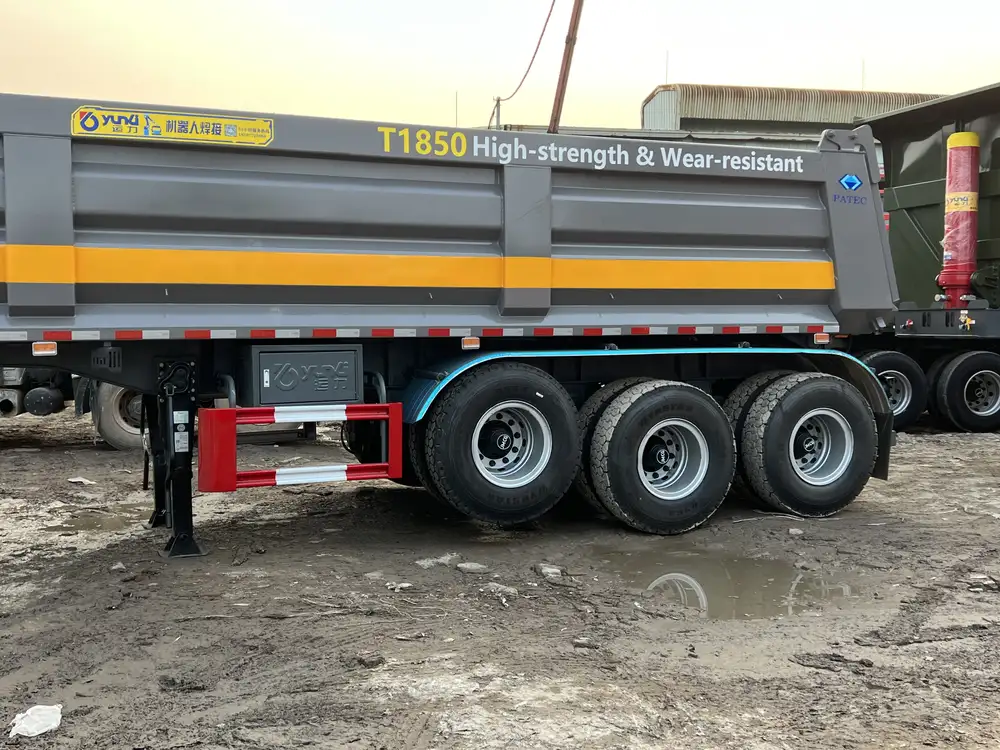Understanding the equipment, regulations, and practical implications associated with towing gooseneck trailers using semi-trucks is crucial for modern transportation. This article dissects the complexities of this subject, providing explicit insights, comparisons, and structured information relevant to manufacturers, drivers, and enthusiasts in the trucking industry.
Definition of Gooseneck Trailers
Gooseneck trailers are characterized by their unique coupling mechanism, where a long neck extends from the trailer to position above the truck’s rear axle. This structural design allows for improved stability and weight distribution, which is essential for transporting heavier loads compared to traditional trailers. Typically employed for transporting equipment, livestock, and construction materials, gooseneck trailers are indispensable in various sectors.
Key Features of Gooseneck Trailers
| Feature | Description |
|---|---|
| Coupling Mechanism | Utilizes a ball hitch that sits over the truck’s rear axle for enhanced stability. |
| Weight Distribution | Improved over traditional trailers; allows for heavier payload capacity without excessive sway. |
| Versatility | Commonly used for farming, construction, and recreational purposes. |

Can You Hook a Gooseneck Trailer to a Semi-Truck?
Regulatory Framework
Before hooking a gooseneck trailer to a semi-truck, one must consider the regulatory framework governing these vehicles. The legality of such a configuration often hinges on factors including:
Weight Limits: Each jurisdiction has specific weight limits for towing. Ensure the combined weight of the semi and the gooseneck trailer does not exceed the limits set by federal and state regulations.
Towing Capacity: Semi-trucks are generally rated for substantial towing capacities. However, it’s essential to verify the individual truck model’s towing capabilities.
Insurance and Liability: Ensure that your vehicle meets insurance requirements and that you’re compliant with all local driving laws.
Towing Equipment Requirements
To effectively hook a gooseneck trailer to a semi-truck, particular equipment and modifications may be required:
Gooseneck Coupling: A gooseneck hitch designed for semi-trucks must be installed. This requires professional installation to ensure safety and compliance.
Safety Chains: Required in many jurisdictions, safety chains add an extra layer of security, preventing the trailer from disconnecting while in transit.
Lighting and Electrical Connections: Verify that the semi-truck’s electrical system can accommodate the trailer’s lighting signals. Adapters may be needed to ensure compatibility.

Practical Considerations for Hooking Up
When hooking a gooseneck trailer to a semi, follow these practical steps:
Park the Semi-Truck: Position the truck on stable, level ground to facilitate the coupling process.
Align the Trailer: Position the trailer with the gooseneck directly under the coupling mechanism of the semi.
Lower the Gooseneck: Engage the trailer’s gooseneck by lowering it onto the hitch on the semi-truck, ensuring that it locks securely.
Check Connections: Inspect the hitch mechanism, safety chains, and electrical connections to confirm all are correctly secured and operational.
Advantages of Towing Gooseneck Trailers with Semis
Hooking a gooseneck trailer to a semi offers various benefits that make this combination not only feasible but advantageous:
Increased Payload: Semi-trucks generally possess higher towing capabilities, allowing for more substantial load transportation.
Improved Stability: The design of the gooseneck enhances vehicle stability, particularly with larger loads, reducing the risk of swaying and improving handling.
Versatility: This combination allows for transporting diverse goods ranging from heavy machinery to livestock with ease.
Troubleshooting Common Issues
Connecting a gooseneck trailer to a semi truck is not without potential complications. Here are common issues and their resolutions:

Problem: Incompatible Equipment
Solution: Ensure you select a gooseneck hitch designed explicitly for semi-trucks. If your existing hitch is not compatible, consult with a professional for recommendations.
Problem: Electrical Signal Failure
Solution: Inspect the wiring connections between the semi and the trailer. If the electricity flow is disrupted, it might be necessary to use adapters or replace damaged wiring.
Problem: Uneven Weight Distribution
Solution: Assess the overall setup to ensure the weight in the trailer is distributed evenly. Adjustments can be made by redistributing the load or employing additional weight-distributing systems.

Conclusion: The Feasibility of Hooking a Gooseneck Trailer to a Semi
In conclusion, hooking a gooseneck trailer to a semi-truck is possible and often advantageous, contingent upon appropriate equipment, understanding regulatory frameworks, and adhering to safety measures. By weighing the benefits and addressing potential issues systematically, transportation professionals can enhance their operational capacities while ensuring compliance and safety.
Key Takeaways
- Hooking a gooseneck trailer to a semi-truck is viable with the right modifications and equipment.
- Regulatory compliance and safety considerations are paramount.
- Troubleshooting potential issues can facilitate smooth operations and prevent costly errors.
This comprehensive guide serves as a crucial resource for manufacturers, operators, and drivers in the trucking industry, providing clarity and insights into the complexities surrounding gooseneck trailers and semi-trucks. Transitioning to this setup can significantly improve transportation efficiency and broaden service capabilities.



